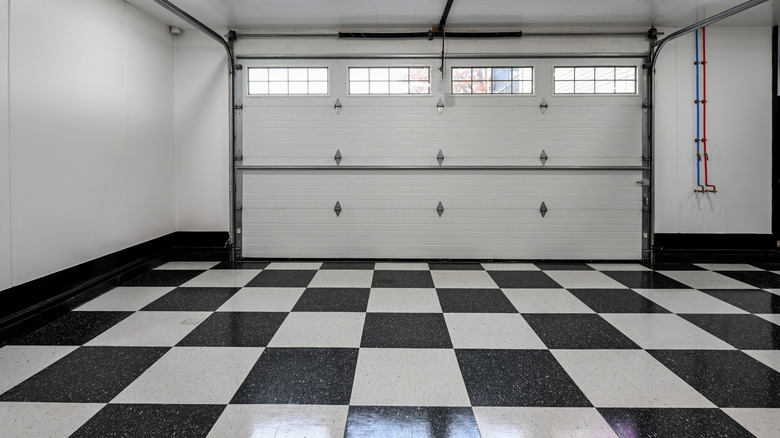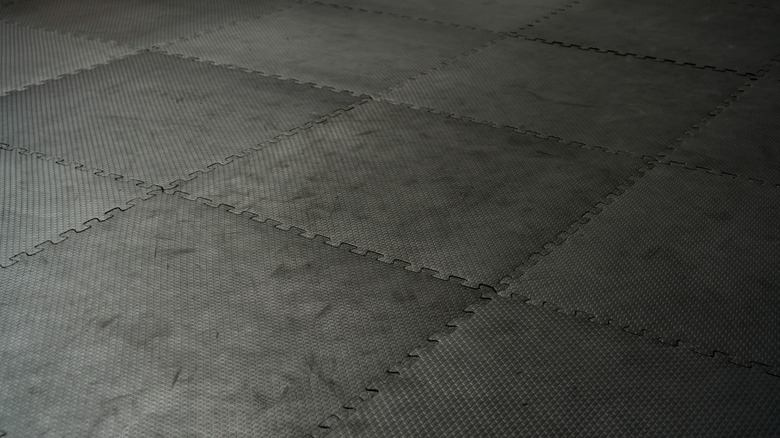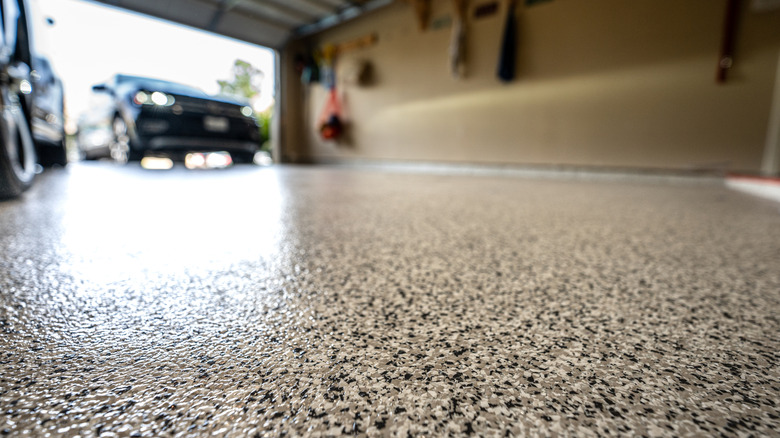Drawbacks Of Using Tile Flooring In The Garage That You Probably Haven't Considered
Interlocking garage tile flooring offers a quick DIY option to cover up your slick, boring, or stained concrete floors. They can hide a lot of flaws, are easy to install, and can help you upgrade your garage floor. Garage tiles create a floating floor design and give you the chance to move or change the layout. Plus, the tiles come in a variety of colors and designs, so you can easily customize your garage. But the seams between the tiles can cause issues, especially during extreme temperatures, and they might not look great forever. Looking at the drawbacks of a garage tile floor helps you decide if it's the right option for your home or if you're better off refinishing the existing surface.
Garage floor tiles lock together to keep them in place instead of using adhesive to hold them down. While the design allows for easy installation, it leaves the flooring susceptible to issues. Even if the material itself is waterproof, the seams aren't. That means any type of liquid, like melted snow on shoes, rain on car tires, or fluids from vehicles, can seep between and under the tiles where it's nearly impossible to clean. This moisture could also lead to mold and mildew growth, which can be a particular cause of concern if you live somewhere humid and your space isn't weather-controlled.
Other drawbacks of garage tile floors to consider
It's possible for garage tiles to fade if UV rays from the sun hit them. The issue could be worse if you have windows in your garage or garage door. Sun fading could also be a problem if you leave your garage door open frequently. If you want to give your garage a facelift with tile, make sure to choose a UV-resistant option to prevent fading if you're concerned about discoloration.
Weather extremes could also impact your garage tile floor, especially if your garage isn't heated and cooled like the rest of your house. Cold and heat can make the flooring contract and expand. You might notice buckling between the tiles or complete disconnection between some pieces if you live somewhere with more extreme temperature fluctuations. This creates an uneven surface that could cause a tripping hazard.
The texture of garage tiles could also become a negative depending on the type of tile you choose. Some garage tiles have texturing to make the surface less slippery. However, that texture isn't always easy to clean, and the seams between the tiles could also trap dirt, sawdust, and other debris when you try to sweep. If the seams aren't tight or if the texture is too rough, you might have difficulty moving rolling tool chests and other items across the floor.
Alternatives to tile flooring for garages
If you're having second thoughts about garage floor tiles, there are other flooring options to consider for your garage. Roll-out mats offer a close alternative to tiles. Instead of installing individual tiles, you simply roll out a large mat to cover a section of the flooring. You can use multiple garage mats to cover the entire floor. Like tiles, the mats don't use adhesive, so you can move them around. On the downside, roll-out mats usually don't have as many color options, and you can't customize patterns like you can with tiles.
Epoxy coatings bond to the concrete garage floor, creating a seamless surface that holds up well to heavy-duty use. You can choose from a variety of looks, including glossy finishes and designs with flecks. This additional layer protects the concrete below it and makes spills easy to clean. However, epoxy doesn't work well in garages with moisture issues and requires precise installation for it to bond properly. Epoxy floors can also be slippery if you don't include additives to help create more texture and friction.
If you're looking for a budget-friendly way to change the look of your floor, consider painting or staining the existing concrete. Paint is easier to apply than epoxy, but it doesn't last as long and may need to be retouched regularly. Concrete stain is a little more difficult, but it can be a DIY project with a bit of research. Stain soaks into the concrete, so it doesn't flake. While they are durable, both of these options could still be stained or damaged by chemicals if they spill on the floor.


